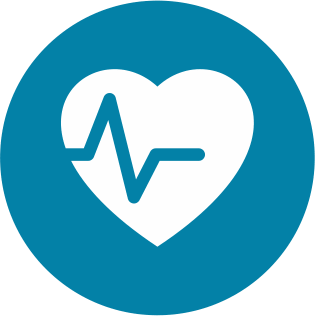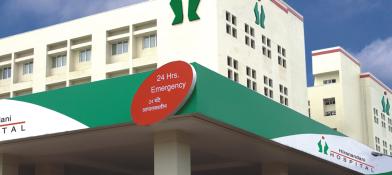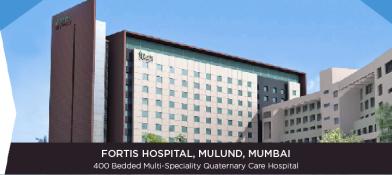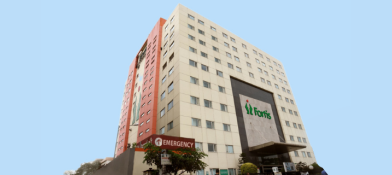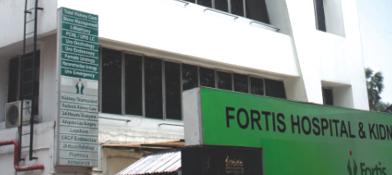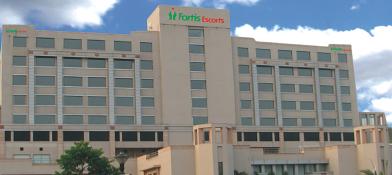Transcranial Magnetic Stimulation
Overview
Transcranial magnetic stimulation (TMS) is a neurophysiological procedure. It is a non-invasive technique of stimulating the nervous system by using magnetic fields. This magnetic field influences the brain’s electrical activity. It is one of the treatment methods used to treat depression and other psychological disorders.
Principle
An individual brain is made of tiny strands called neurons. Neurons act by producing small electrical currents called nerve impulses. These impulses are modified by TMS to produce the desirable change. The principle behind TMS is electromagnetic induction. By using electrical currents and magnetic field generation desired changes can be brought.
In the TNS equipment electricity is used to generate the magnetic field in a coil. This when applied to the brain, influences the neurons which act as secondary coils and in turn generate another impulse. Thus, new impulses can be generated or the direction of the impulse be altered to generate the response. By altering the direction of the current, the magnetic fields can be altered which changes the electrical impulses in the brain. This phenomenon is called pulsed electromagnetic force generation.
Mechanism
TMS is given by attaching an electromagnetic coil to the scalp. This coil produces magnetic pulses that stimulate the nerve of the brain. It activates the areas of the brain that have decreased their function.
The TMS stimulations are of two types. They are
- Deep TMS is used when deeper and wider areas of the brain have to be stimulated and uses a different coil.
- Repetitive TMS is used when repeated magnetic pulses have to be given. The coil used differs from dep TMS.
Factors controlling TMS
- The TMS magnet is smaller in size than the magnet used for MRI. It has strength of 1.5 to 2 tesla units.
- It can use low-frequency or high-frequency pulses.
- It can produce various pulse patterns like burst patterns that produce faster stimulations than normal
- Different cols are used for different types of treatments
Indications
TMS is used for both diagnostic and treatment purposes. They are
- It is used for brain research to study the sensory and motor areas.
- With advanced imaging techniques, it can display the functioning of the internal structures of the brain.
- It gives information about various pathways of the transmission of nerve signals and motor nerves.
- It also displays information about the functioning of the nerve roots
- It also helps in the location of injuries, stroke, and nerve damage in neurological diseases
- It is very effective in the treatment of resistant depression that did not respond to other treatments.
- It can also be used in various psychological disorders like schizophrenia, substance abuse disorders, obsessive-compulsive disorders, and post-traumatic stress depression.
Advantages of Tms
TMS has many advantages. They are:
- It is non-invasive and does not require any cuts or injections
- It is a new treatment modality
- It does not need to take any pills or medicines
- It is safe in pregnancy and breastfeeding
- There are no cognitive side effects
- It has the advantage of improving cognitive function in older adults
- No need for surgery or implantation of any devices in the body
- No complications of anesthesia
- It is safe and well-tolerated
- It can be used with other treatments too
Before the Procedure
An individual should understand the importance of this procedure by discussing it with a healthcare provider (HCP). History regarding previous medical, surgical, allergic, and medication history should be informed to the HCP. They may advise certain blood tests before the procedure.
A mental health evaluation will be done. Details regarding previous history of mental health disorders, medications taken for them, and any traumatic history will be asked by the HCP. Other questions including history regarding seizures, headaches, and previous TMS treatment will be asked.
One should also give information about the pregnancy status and the placement of any implantable devices. This includes cardiac stents, aneurysm clips, vagal nerve stimulators, pacemakers, hearing implants, retained bullet fragments, or any metal devices of objects in the body. Any jewelry, watches, and glasses have to be removed before the treatment.
During the Procedure:
TMS has two steps. The first step is mapping and the second step is the actual treatment:
- Mapping: Mapping is the process of identifying the best area to place the magnet on the head and the correct dosage of the magnetic field. An individual is made to sit comfortably with earplugs on. A magnetic coil is placed on the head that looks like a helmet or an extension arm. Single pulse impulses are given to generate impulses. These impulses feel like tapping on the coil followed by a click and pause. The magnetic energy is adjusted by moving the coil around the head to observe the location at which the body twitches. The amount of magnetic energy needed to mobilize the fingers is noted which gives the dosage of the intensity.
- Treatment: During the treatment, the individual is seated comfortably and then the correct intensity of the magnetic field is applied at the exact location by repeated tapping and clicking followed by a pause. Initially, TMS was done for 37 minutes but is now done in 20 minutes only.
After the Procedure
One can resume normal activities of daily living after the treatment.
Effectiveness
Depression can subside or completely go if the TMS works properly.
Side Effects
Mild discomfort of the scalp, pain, headache, twitching of the muscles, ringing in the ears, sensitivity to sound, and lightheadedness are some of the side effects.
Risks and Complications
Certain risks and complications are triggering seizures, severe headaches, emotional highs in mental disorders, and permanent hearing loss.
Conclusion
TMS is a treatment done to correct psychological disorders. It uses the magnetic field to generate electrical impulses in the brain. It is safe, and effective and improves the quality of life of individuals.


